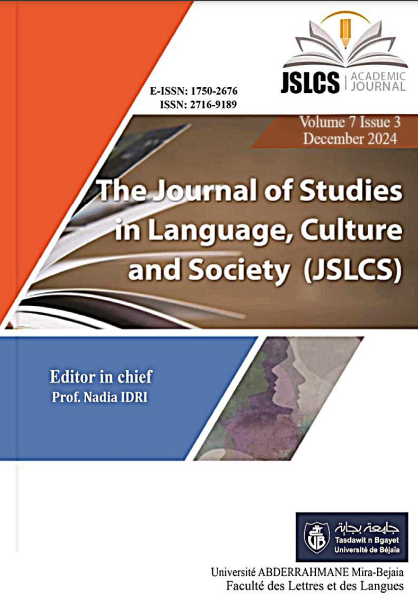Systematic Construction of Semantic Structure Computationally Digital Communication Systems As A Model
Keywords:
Systematic construction of semantics, artificial intelligence, computational semantics, digital systemsAbstract
Our study deals with the systematic construction of the structural representation of meaning, as it is based on a basic topic, which is structure, as it goes beyond the representation of meaning for its parts, as logical representations are usually used to perform automatic inferences according to the appropriate theoretical confirmation. Also, the transition from the ordinary level of meaning towards the automatic discovery of knowledge is a closely intertwined designation between the two features. Because resources that were created non-automatically are automatically extended or merged. How is that? This occurs by directing the automated search to semantic information and restricting it to non-automatically specified information. From here, logical representations of data are created at the intersection of non-automated specification and automated tuning; This has generated many questions about the computational structure of semantics and how it works. Do we get better and deeper semantic analysis because we use specific linguistic knowledge in a non-automatic manner, or is the future in powerful communicative digital models that perform a complete task from natural language inputs and outputs alone without pre-defined linguistic knowledge?
References
Al-Said A. B. & Rashwan M. (2019). Machine Processing of Arabic Texts, KingAbdullah Center for Arabic Language Service, Riyadh, Saudi Arabia
Campbell, A. E. (1996). Interpretation: The relationship between language and ontology. AAAI-96 Fall Symposium Series on Knowledge Representation Systems Based on Natural Language.
Dwivedi, Y. K. (2023). “So what if ChatGPT wrote it?” Multidisciplinary perspectives on opportunities, challenges and implications of generative conversational AI for research, practice and policy. International Journal of Information Management.
Frank, R. (1998). Structural complexity and the time course of grammatical development. Cognition.
Hendrix, G. G. (1978). Developing a Natural language interface to complex data. ACM Transactions on Database Systems, 105 - 147.
Khurana, D. K. (2023). Natural language processing: State of the art, current trends and challenges. Multimedia tools and applications.
Kornai, A. (2007). Mathematical linguistics. Springer Science & Business Media.
Lasnik, H. (2021). Levels of representation and semantic interpretation: Abrief historyand a case study. Cadernos de Linguística. Manning, C. (2015, novembre 16). Récupéré sur https://web.stanford.edu: https://web.stanford.edu/class/archive/cs/cs224n/cs224n.1162/handouts/Computational-Semantics.pdf
Mansouri, A. N. (1985 ). Secondary schools. Thesis submitted for the degree of Ph.D. . Département of linguistics, University of Sheffield. . Merigoux, D. (2021). Proof-oriented domain-specific language design for high assurance software. Thèse de doctorat. Ecole doctorale sciences Mathématiques se Paris centre.
Sayed R. A. (2022). Arabic Language and Artificial Intelligence, Arrafid ElectronicCultural Journal, Sharjah, UAE
Soulier, L. (2023, février 01). ChatGPT : Une rupture technologique ? Récupéré sur sciences. sorbonne universite.fr:https://sciences.sorbonneuniversite.fr/actualites/chatgpt-une-rupturetechnologique
Sportiche, D. K. (2013). An introduction to syntactic analysis and theory. John Wiley&Sons.
Stahl, B. C. (2024). The ethics of ChatGPT–Exploring the ethical issues of an emerging technology. International Journal of Information Management.
Van Dijk, T. A. (1983). Strategies of Discourse Comprehension. Academic Press. Winograd, T. (N.D). Récupéré sur https://hci.stanford.edu/winograd/shrdlu:
https://hci.stanford.edu/winograd/shrdlu
Xu, Y. L. (2021). Artificial intelligence: A powerful paradigm for scientific research. TheInnovation.
Downloads
Published
How to Cite
Issue
Section
License
Copyright (c) 2024 Aida Haouchi

This work is licensed under a Creative Commons Attribution 4.0 International License.







